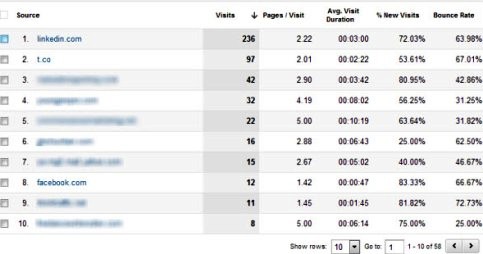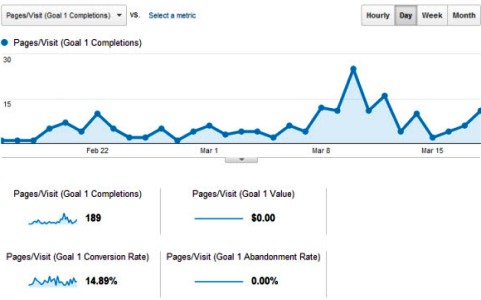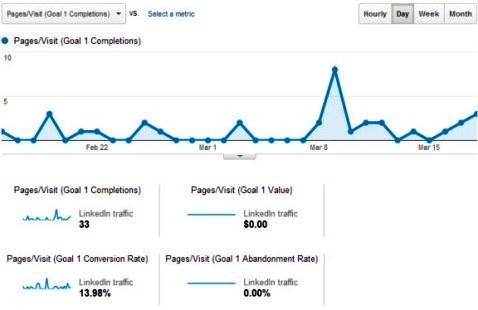 How do you measure and manage your social media marketing?
How do you measure and manage your social media marketing?
Most marketers and website owners are familiar with the classic Peter Drucker phrase, “What gets measured, gets managed.”
So, how do you know what to measure to get the most out of your social media marketing for your business?
Here’s what you need to measure to know how well your social campaigns are performing.
Metric #1: Share of Voice
You may already be tracking the brand mentions on social media websites, as well as whether those mentions are positive, negative or neutral. And this gives you some useful feedback about your social outreach efforts.
But how would you to know how your company is doing compared to the available market?
You can take things to the next level when you measure the share of voice (SOV).
Your website’s SOV measurement helps you discover what percentage of mentions within your industry goes to your brand—and what percentage goes to your competitors.
Fortunately, there’s Social Mention, a free tool to help you measure and compare your company’s mentions to your competitors’. (Editor's Note: Social Mention is no longer an active online tool.)

Here’s how to see why this measurement is important. Imagine you track only the number of times your brand was mentioned on Twitter. As the result of your social media marketing efforts, you see this number go from 10 mentions per day to 20.
On the surface, this might seem like a win, but what happens if the total number of brand mentions across all of your competitors is closer to 1,000 per day?
Now you realize you’re only receiving a drop in the bucket of brand mentions in your niche. This highlights both the number of potential customers who have yet to be exposed to your brand and how far you have to go in terms of overall market penetration.
To calculate SOV, conduct a search for each of your competitors and then divide your company’s number of mentions by the total number of mentions in your market.
Metric #2: Referral Traffic
It’s one thing to build up a thriving social community on sites like Twitter and Facebook. But it’s another thing entirely to entice these visitors to leave their social spaces and head back to your company’s website.
Get World-Class Marketing Training — All Year Long!
Are you facing doubt, uncertainty, or overwhelm? The Social Media Marketing Society can help.
Each month, you’ll receive training from trusted marketing experts, covering everything from AI to organic social marketing. When you join, you’ll also get immediate access to:
- A library of 100+ marketing trainings
- A community of like-minded marketers
- Monthly online community meetups
- Relevant news and trends updates
Good social media marketing campaigns aim to increase on-site website results. So it’s only natural that measuring the amount of referral traffic sent by social sites should have a place in the savvy marketer’s tool chest.
Fortunately, Google Analytics makes this process easy. To view the amount of referral traffic your website receives from social networking sites, log into your account and navigate to the Referrals section found on the Traffic Sources menu.
From there, you’ll be able to view the social sites that send you the most referral traffic, as well as the relative bounce rate, average time on site and pages viewed per visit of each social site’s visitor base.

Discover Proven Marketing Strategies and Tips
Want to go even deeper with your marketing? Check out the Social Media Marketing Podcast! Publishing weekly since 2012, the Social Media Marketing Podcast helps you navigate the constantly changing marketing jungle, with expert interviews from marketing pros.
But don’t let the name fool you. This show is about a lot more than just social media marketing. With over 600 episodes and millions of downloads each year, this show has been a trusted source for marketers for well over a decade.

You’ll want to pay special attention to the traffic metrics from your social sites. They may show you significant differences in the performance of one social network versus another.
If, for example, you see that your Twitter visitors have a significantly higher bounce rate than readers who arrive on your site from Facebook, you might decide to allocate more of your marketing time and budget to connecting with followers on Facebook.
Metric #3: Conversion Rate
Finally, here’s the most important social media metric—conversion rates!
This is the metric that tells you what’s working for your business.
And this assumes that you’re utilizing social networking sites in order to generate some type of measurable activity on your company’s website, whether these activities (or conversions) occur as product sales, newsletter signups, lead generation form completions or other action.
If this is the case, it’s important to ensure that you aren’t spending time on social media marketing if the referral traffic you’re able to procure from these sources doesn’t ultimately convert on your home site!
To measure conversions, you’ll need to set up two elements within Google Analytics: Goals and Advanced Traffic Segments.
- Google Analytics Goals enable you to determine when a specific action occurs on your website. There are four default types of Goals made available within Google Analytics, though these can be customized to measure any of the conversion activities described above. For more information on setting up Goals, check out Google’s help documentation on the subject.

This sample Goal measures the number of website visitors who visit at least three pages on the site.
- In addition, Advanced Traffic Segments allow you to break out your analytics data by individual traffic source. As an example, by creating a segment that looks at the on-site activities of your Facebook visitors, you can split up your Goals data to determine which social sites are sending you the most eventual conversions.

The conversion data pictured above has been filtered with an Advanced Traffic Segment that measures the number of conversions that occurred from LinkedIn visitors.
At least once a month, take the time to measure the number of conversions generated on your site by visitors from different social media websites.
You can then use this information to allocate future marketing resources according to the social sites that provide the biggest impact on your website’s bottom line.
By taking these measurements and adjusting your social media campaigns, you’ll ultimately ensure that your social media investment will bring more value to your business.
What do you think? What tools are you using to measure your social media websites? Leave your questions and comments in the box below.
Attention Agency Owners, Brand Marketers, and Consultants

Introducing the Marketing Agency Show–our newest podcast designed to explore the struggles of agency marketers.
Join show host and agency owner, Brooke Sellas, as she interviews agency marketers and digs deep into their biggest challenges. Explore topics like navigating rough economic times, leveraging AI, service diversification, client acquisition, and much more.
Just pull up your favorite podcast app, search for Marketing Agency Show and start listening. Or click the button below for more information.

